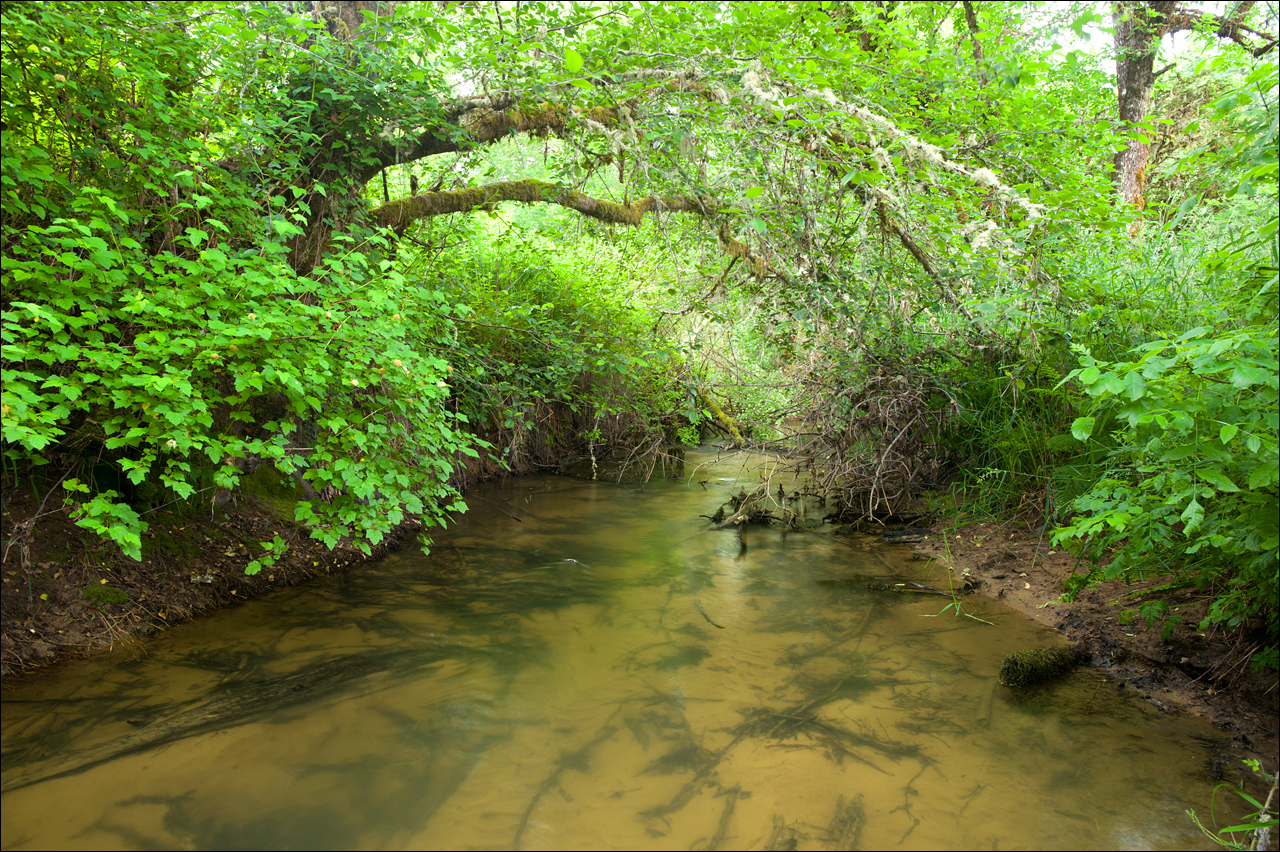
As the mist rises on a clear February evening, a pair of Canada geese honk gently from a standing pool of water in a dormant hay field. The pair has found sanctuary at the edge of a farm and creek-side forest and are settling down for the evening. Thanks to a collaboration between landowners Trey and Tammie Hagen and McKenzie River Trust, these fields have recently been protected forever through a working lands conservation easement on the bank of Upper Ferguson Creek in the Long Tom Watershed.
Trey Hagen, who grew up just down the road, purchased the farm with his wife, Tammie, in 2008. The couple began producing blueberries, figs, hay, and timber. In 2011, they sold a 64-acre conservation easement to the Trust to protect wildlife habitat along the creek that runs through a significant portion of their property. Trey is quick to boast about the four beaver dams scattered throughout the area: “When we first bought the place, there were no beavers here. The area was in cattle production, and cows were often in the creek mucking things up. Now, we have beavers up and down the creek.”
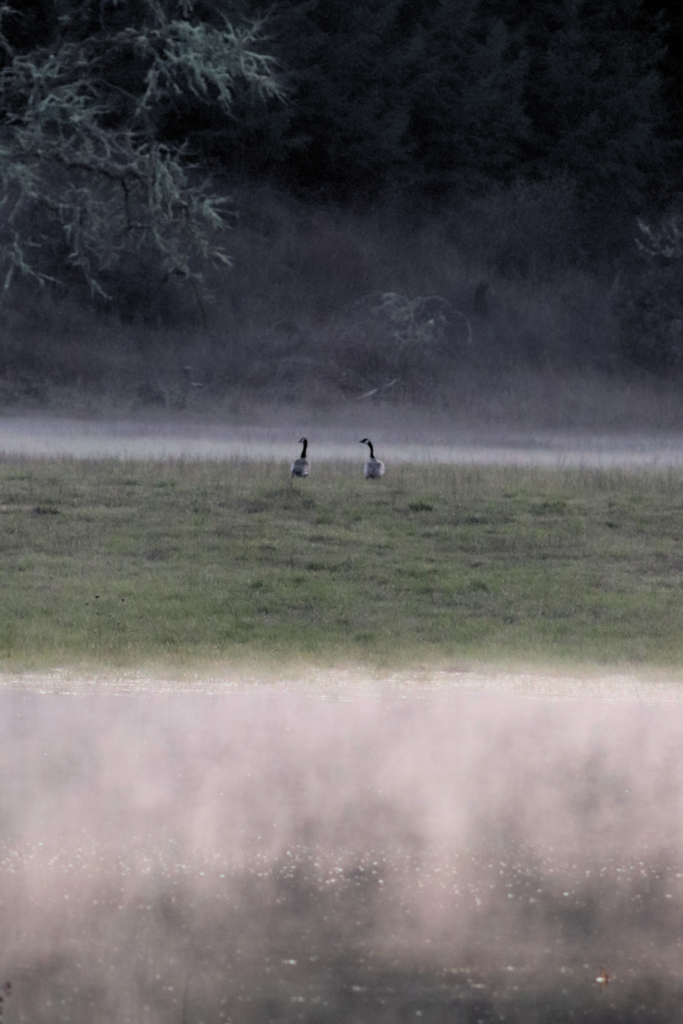
In February, the couple expanded protection on their property by selling an additional working lands conservation easement, which permanently protects 150 acres of riparian habitat and working lands, including roughly 45 acres of farmland and 50 acres of timber. “Our choice to pursue this form of land protection goes beyond preserving the farm for our children,” shared Trey. “Keeping the land in its current state with a mix of wilderness and working lands feels important. Living here, I’ve seen farmland all over the state be reduced to 15 or 5-acre parcels. Larger tracts like this are becoming few and far between, and this easement is a way to keep the land together so that there will always be a future for local agriculture here.”
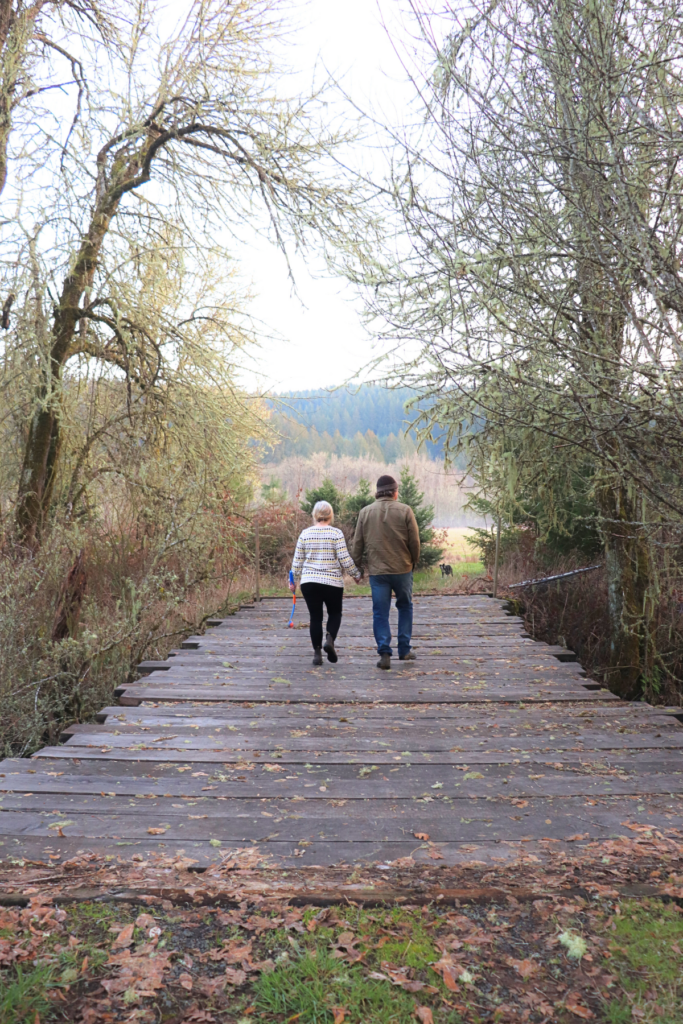
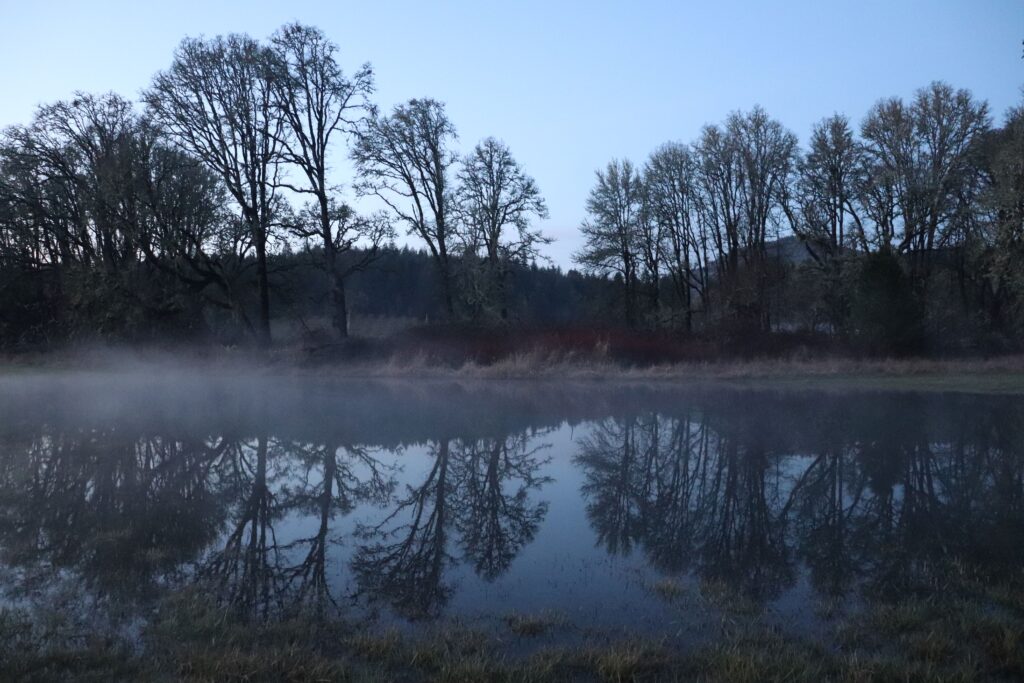
Trey isn’t the only one who has watched changing needs put pressure on small farmers. Despite statewide agricultural protections, Oregon has continued losing farm and forest land at rates that concern farmers and legislatures alike. In the mid-2010s, then-State Senator Arnie Roblan, who chaired the Agriculture and Natural Resources Committee and the Rural Policy Committee, visited the Hagen’s farm. Roblan and others were exploring ways to support smaller-scale farmers in keeping their lands in production and were busy visiting constituents across the state. That group would spend the next several years working to combat some of the most common challenges Oregon’s farmers have faced. In 2022, those efforts resulted in $5 million designated to support the Oregon Agricultural Heritage Program (OAHP).
The Hagen’s working lands conservation easement is the first private easement to be funded through this program, which is administered through the Oregon Watershed Enhancement Board (OWEB). The program aims to increase the economic viability of Oregon’s agricultural operations, enhance fish and wildlife, water quality, and other natural resources on Oregon’s working lands, and protect working lands against conversion and fragmentation. OWEB’s Executive Director Sara O’Brien celebrated the transaction, “OWEB is proud to partner with the McKenzie River Trust and the Hagen’s on this multi-benefit project. Oregon Ag Heritage Program funds are an outstanding opportunity to invest in both working lands and fish and wildlife habitat.”
This intertwined relationship between working lands and wildlife habitat is motivating for Trey and Tammie. “Everyone comes into property ownership with different intentions,” Trey notes. “You have to ask, ‘What are your values?’ This land feels like an evolution of values for us. Since the first conservation easement in 2011, we’ve steadily seen the property’s health improve. Today, we have beavers, elk, coyotes, bears, bobcats, and a heron rookery all right here on the farm. We’re confident that this working lands easement will bring similar benefits to the land. We’re grateful to the Trust and the OAHP program for helping us protect this special area and ensure that Oregon’s working lands continue working for small farmers like us today and for generations to come.”

